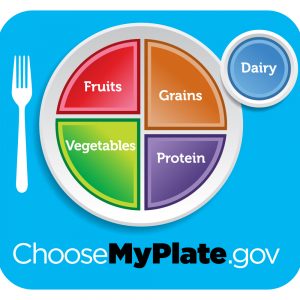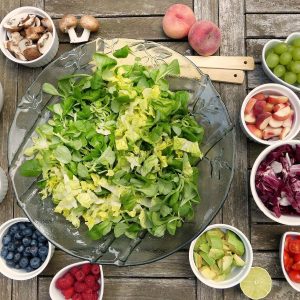Portion Size vs Serving Size: Everything You Need to Know
In past posts, we’ve talked about the importance of teaching kids about nutrition as a way to encourage healthy eating and to build their competence. In this post, we’re going to talk about a specific idea in nutrition that is helpful for moms and kids to learn about, and that’s the idea of serving sizes and portion sizes. We’re going to explain the difference between the two, talk about why they’re important, and give you some easy ways to estimate portions/servings at home.
What is serving size and what is a portion size?
A serving size is a defined amount of food or drink. With packaged foods like crackers, cereal, or pasta, the serving size can be found on the nutrition label. Usually, it’s measured in something like cups, ounces, or tablespoons.
A portion size refers to the amount of food served on a plate to be eaten. Portion sizes are good to be aware of because they can help you to better recognize an appropriate amount of food for you to serve your child. Portion sizes differ by child age since children have different nutritional needs at different ages. Check out this resource from MyPlate.gov.
Where the two come together is that serving size can be helpful in understanding what a healthy portion size may be. Think of serving sizes as guidelines for portion sizes. Sometimes, the serving size will exactly the right amount for a portion. Other times, a portion may be more, or less, than the recommended serving. It can depend on child age, gender, and activity level.
Why do serving size and portion size matter?

Serving size can be helpful in understanding what a healthy portion size may be. Think of serving sizes as guidelines for portion sizes. Sometimes, the serving size will exactly the right amount for a portion. Other times, a portion may be more, or less, than the recommended serving. It can depend on the child age, gender, and activity level- same with adults! Ultimately, they both matter as healthy guidelines to better understand not only what you’re eating, but how much you’re eating, as overeating (in children and adults) can lead to health concerns if it happens frequently.
Start by looking at the nutrition label
To find out what a serving size is for a food item, start by looking at the Nutrition Facts Label on the package. While there’s a lot of good information on these labels, start by looking at the top and reading the serving size. This is especially helpful for snack foods, like popcorn or crackers, as Nutrition Facts Labels will typically give the exact amount included in serving, making it easy for you to count out the right amount for your child. Rather than fill a bowl with popcorn/crackers and let the child eat, take a look at the serving size first to get an idea of a healthy portion.
How do we know what are appropriate portion sizes?
Serving size will differ by child and by age. That is to say, older kids often need more food than young kids, and an active child involved in a lot of sports may need more food to fuel that activity. In any case, a good place to start is with the MyPlate recommendations. These recommendations encouraging filling half your plate with fruits and veggies, a quarter of the plate with whole grains, a quarter with lean protein, and serving water as a drink. MyPlate is helpful because it gives a visual aid for what a healthy plate generally should look like. The cool thing about it is that MyPlate can be a helpful tool for eating at any age, meaning it works for the whole family!
Use measuring cups

When starting to learn about serving sizes, measuring cups can be useful o to show you exactly how large a serving size is, and they’re fun for kids to play with, too! Using measuring cups and measuring spoons is a good way for kids to learn alongside you when it comes to understanding serving and portion sizes.
But don’t worry- No measuring cups? No problem!
There are also some general ideas of what serving sizes look like so that you can still determine appropriate portions without the measuring tools. Some household objects can help you and your kid’s eyeball serving sizes without measuring cups. See some helpful examples below:
- A tennis ball is about the same size as a half a cup of pasta or rice. It’s also a good way to choose a serving-sized apple or orange
- A deck of cards is about a 3– ounce serving of meat, like chicken or steak
- A baseball is about the size of a cup, which is a serving size of raw fruits and vegetables
- A ping pong ball is about two tablespoons of peanut butter, which is a standard serving size
Above all, teach kids to listen to their bodies
Serving sizes can be helpful guidelines, and it’s a good idea to be mindful of portion sizes. But above all, it’s important to encourage kids to listen to their bodies and hunger cues. When kids listen to their bodies, they’re more likely to eat appropriate amounts of food for their body’s needs.
What else do you want to know about portions and serving sizes? Are these tips helpful? Tell us below in the comments!